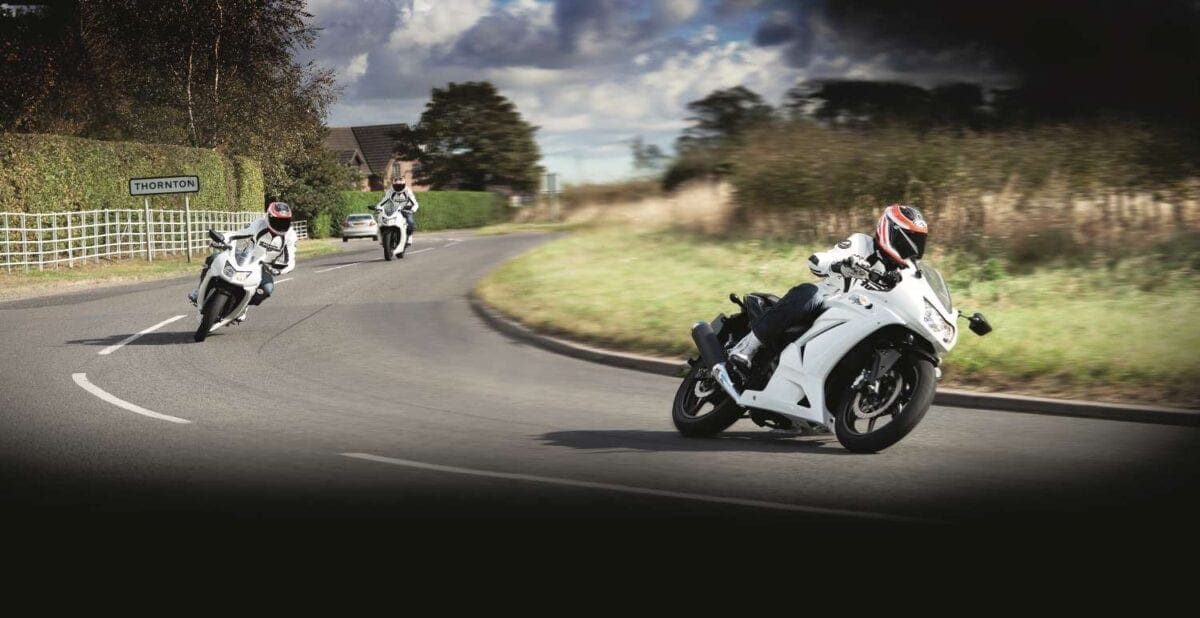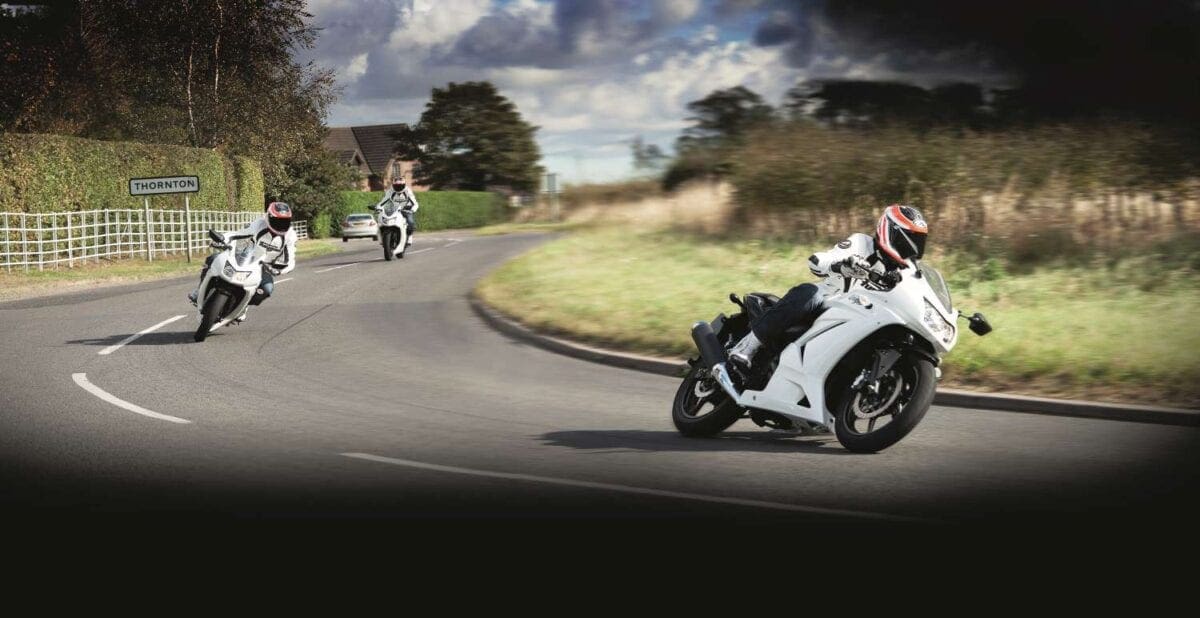Approach
There’s a corner ahead. Woo-hoo, time for some fun. But first you need some information. How sharp is the bend, what’s the surface like, is there anything coming the other way? And the best way to answer all these questions is to slow down in plenty of time and put yourself in the right place to find the answers.
Slowing down in good time lets your brain concentrate on reading the road, but it also lets you release the brakes in plenty of time so that your bike’s suspension is already settled when you make the turn.
Enjoy everything More Bikes by reading monthly newspaper, Read FREE Online.
As you approach the corner, change down the gears until your are in the right ratio for strong, but controlled, acceleration. Then move to the position that gives best visibility around the corner. Which is towards the left approaching a right hander and towards the right approaching a left. Don’t look just ahead of you, but focus as far ahead as you can see. Your peripheral vision will keep your brain aware of where the edge of the road or the white line is. Learn to trust it.
Entry
Hold your position as you look into the corner and look for ‘limit point’ (sometimes called vanishing point) – this is where the kerbs on either side of the road meet in the distance. While they are together you are still entering the corner. When they start to move apart, you are approaching the apex and now is the time to turn. Turning here seems very late and all your instincts will have told you to begin leaning much earlier. But doing this is a mistake – turning too early will make you more likely to run wide on the exit.
Turning later when you can see around the corner is safer because now you know exactly how sharp the turn is and whether it gets tighter towards the exit. It also means that you can see if anything is coming the other way.
Just before turning, shift your body weight a little to the inside, drop your inside shoulder, but keep looking through the turn. To make your bike lean, give a sharp prod on the inside handlebar and once you’ve got the lean angle you need, release the pressure and let the bike run its path around the turn.
Apex
The apex of a corner is the point that you should aim for to give the smoothest, most even path through it. On most corners you need to be able to see all the way round before you can know where the apex is, which is why it’s important to get the right position on approach and not turn too early.
When you turn the bike you should be aiming for the apex of the corner. Identifying the apex takes a while to master and the slower you go around corners initially, the quicker you’ll come to recognise it. Track based training is useful here because you go around the same collection of corners again and again so there’s plenty of chance to practise.
As you go round the corner, keep the throttle open just off the stop. This helps keep the suspension loaded. If something happens to catch you out – the corner tightens up or you spot some debris in the road – don’t panic. A further nudge on the inside bar will add a little more lean and you’ll be surprised how well your bike will get around a corner. Or a very gentle (and we mean gentle) squeeze of the front brake will bring the bike slightly upright and help it run a wider line without losing control.
This is really advanced stuff, but it’s also the kind of thing you should practise. Roundabouts are good places for this. Find a quiet one, preferably with no exits on one side of it, and practise turning at different points. Then try adding more lean or bringing the bike up on the brakes. The secret here is to be ever so gentle at first to develop a feel for your bike and learn how to add subtle control.
Exit
Once you are past the apex, stand the bike upright with a nudge on the outside bar. As soon as the bike is upright, get on the throttle and give yourself a round of applause. Now, time for the next one.
What to do when it goes wrong…
The biggest mistakes people make are either going too fast into a corner, holding the brake on too long or turning too early and running out of road. All of these things can be remedied so long as you stay calm and do the right thing.
The one thing you should never do is grab a handful of front brake. Doing this makes the bike stand up and run on in a straight line, which usually means into the hedge or, worse, into oncoming traffic.
Too much speed needs a couple of approaches. Either apply the brakes very gently to bring it back under control or add more lean. But not both at once. You’ll be surprised how far a bike will lean when the suspension is settled. This is when your practice at the roundabout will come in useful. Most ground clearance problems are caused by turning too soon after releasing the brakes before the suspension is settled.
Turning too early is the bigger problem because it’s the one that will have you running out of road. If the road is wide enough and your speed is good, then try sitting the bike up a little and make the turn again. Or if you can see around the corner and there’s nothing coming the other way, add a bit more lean – you’ll almost certainly make it.
Advert
Enjoy everything More Bikes by reading the MoreBikes monthly newspaper. Click here to subscribe, or Read FREE Online.



